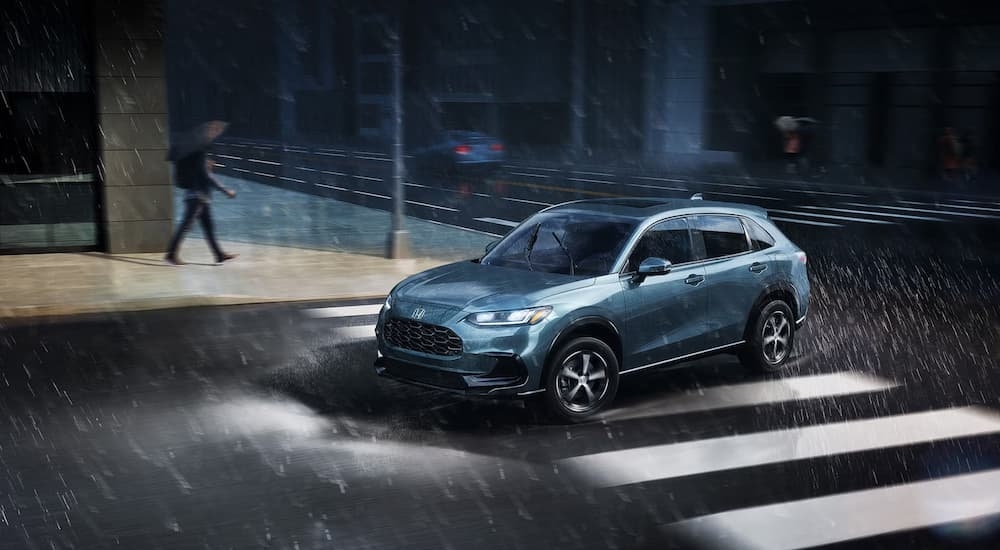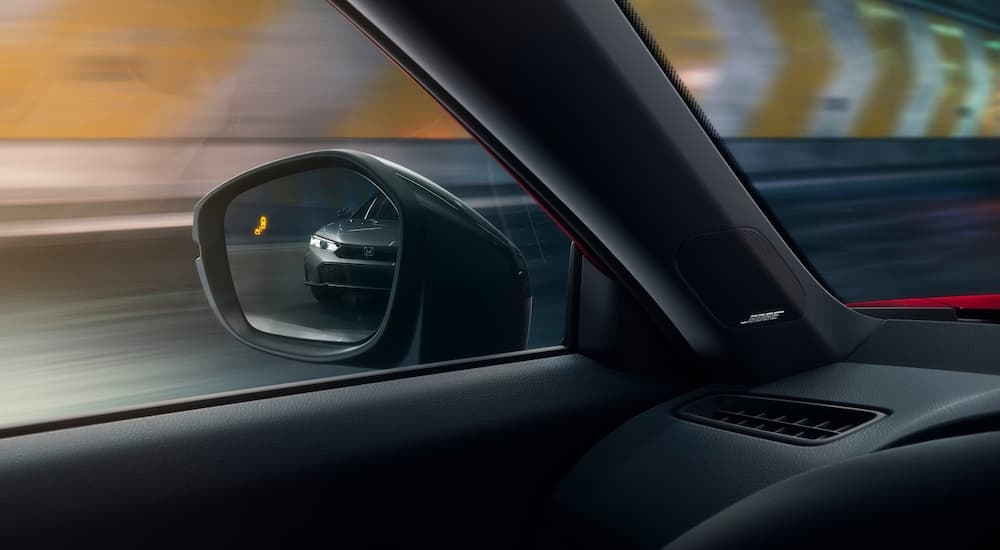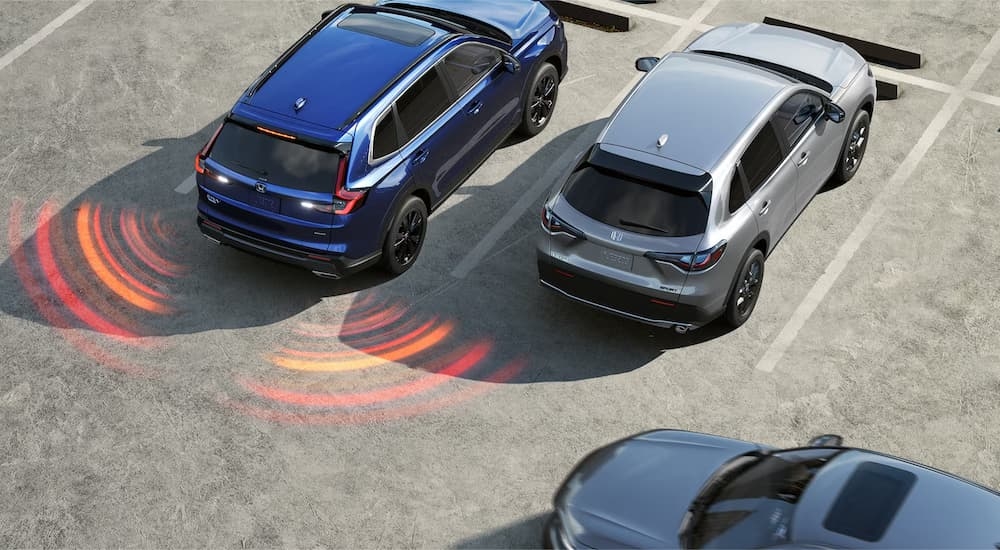When you think about safety during your drive along I-5, you likely want a vehicle that will protect its occupants in the case of a crash and include technology to help avoid an accident in the first place. Honda has seen considerable success in crash testing across its lineup and is committed to developing advanced driver assistance systems (ADAS). However, with the continued development of ADAS technology, it can be challenging to understand what each vehicle offers, which is where our team at Klein Honda, your local Honda dealer near Mountlake Terrace, comes in.
When you visit our dealership, a friendly and knowledgeable staff member will welcome you and take the time to answer any questions you may have. We’ll also ask a few questions of our own to make sure we fully understand your needs. You’ll find that, regardless of whether you’re purchasing new or used, we know our Honda inventory inside and out—especially when it comes to safety. That’s because we’re invested in our community and have been since 1976, which means we’re dedicated to ensuring you feel confident as you travel through Snohomish County, and that confidence starts with safety. Continue reading to learn more about the safety features of Honda’s lineup.
Honda’s Safety History
From the beginning, Honda has always been at the forefront of technological breakthroughs. One area in which Honda has made tremendous progress is the development of advanced driver assistance systems. These technologies, which are intended to improve vehicle safety and driving convenience, have progressed significantly over the years, ensuring Honda drivers can feel confident whether traveling by themselves or with friends and family.
Honda's journey to advanced driver assistance begins with a strong commitment to safety. The brand began adding numerous basic safety measures in the late 1990s and early 2000s, including anti-lock braking (ABS) and traction control (TCS). These technologies served as the foundation for future, more complex systems.
In the early 2000s, Honda debuted its Collision Mitigation Braking System (CMBS), which was among the first advanced safety technologies. CMBS employs forward-facing sensors to detect potential crashes and automatically apply the brakes if the driver does not respond to warnings. This system was just the first of many ADAS capabilities the brand would introduce, demonstrating its dedication to proactive safety.
As Honda's technology advanced, so did its ADAS capabilities. In 2012, Honda debuted the LaneWatch system. This system includes a side-facing camera in the right side mirror to show an expanded view of the road when drivers activate their turn signals. This was an innovative feature for the day, but LaneWatch was phased out a few years later when the more capable Blind Spot Information System was introduced.
It wasn’t until 2014, however, that Honda gave a name to its collection of ADAS systems. The Honda Sensing Suite includes a long list of advanced safety and driver-assist technologies. By 2018, this suite of features could be found on more than one million Honda vehicles across the United States, and for the 2022 model year, it was made standard on every Honda model.
Honda has pushed the boundaries of ADAS technology in recent years, resulting in more advanced and autonomous driving capabilities. For example, the 2021 Honda Legend—which was only released for limited production in Japan—came equipped with Honda Sensing Elite, which included technologies such as Traffic Jam Pilot. Traffic Jam Pilot enabled the vehicle to handle congested roadways with minimal driver interaction, representing a significant step toward Level 3 autonomous driving.
Honda's future vision for ADAS involves even more advanced autonomous driving capabilities and enhanced safety measures. The company's goal is to reach Level 4 autonomous driving, in which vehicles can run without human intervention in most scenarios. Honda is also looking at vehicle-to-everything (V2X) communication, which would allow vehicles to interact with one another and with infrastructure to improve overall traffic safety and efficiency.
What Does Honda Sensing Include Today?
Today, all Honda vehicles come equipped with Honda Sensing. This collection of ADAS technologies includes the following features to help drivers navigate from Mountlake Terrace to their destinations and back again or simply feel comfortable with the kids in tow on their way to Ballinger Park.
Collision Mitigation Braking System: As mentioned above, CMBS uses forward-facing sensors to detect potential crashes. If, after you’re alerted, the system senses you won’t be able to react in time, it automatically applies the brakes in an effort to avoid the collision altogether or minimize damage if a collision does occur.
Road Departure Mitigation System: This system scans the road as you drive, ready to respond if you cross the lines without activating your turn signal. If you do, an alert will be sent, and the system will adjust your steering with a gentle nudge to get you back on track.
Adaptive Cruise Control: First came cruise control, then came Adaptive Cruise Control. This advanced system monitors the flow of traffic in front of your vehicle and adjusts your speed as needed to ensure a safe distance is maintained. This system allows you to set the following distance that makes you feel the most comfortable. Additionally, some Honda vehicles come equipped with Low-Speed Follow, which can bring you to a safe stop if needed, making it easier to navigate stop-and-go traffic.
Lane Keeping Assist System: This system is sometimes confused with the Road Departure Mitigation System. In essence, LKAS simply makes it easier to stay centered in your lane, providing mild steering inputs when you’ve swerved too far one way or another. This is great for newer drivers, as it helps them get a good feel for where their vehicle is in the lane. It’s also great to have after a long day of driving, as it helps you stay focused.
Traffic Sign Recognition System: This system uses cameras to scan the road ahead, letting you know about speed limit changes. You’ll find the information gathered from the system on either your driver information interface or head-up display if your Honda is equipped with that feature.
Other features found throughout the Honda lineup include a Blind Spot Information System, which alerts you to vehicles in your blind spot for safer lane changes, and a Cross Traffic Monitor, which is activated when your car is in reverse and alerts you to vehicles that cross behind you for safer navigation. Finally, Auto High-Beam Headlights are also available on certain vehicles to give you support when driving at night. The system scans the roadway, switching between high and low beams as needed.
Come See the Honda Lineup Today
Honda's dedication to creating advanced driver assistance systems demonstrates its commitment to safety and innovation. From the early days of basic safety measures to today's cutting-edge technologies, the brand has constantly pushed to improve the driving experience and prevent accidents. As technology advances, Honda remains committed to leading the way in developing safer, more intelligent vehicles for the future.
Our team at Klein Honda can explore what Honda Sensing features are available for each vehicle you consider, as well as answer any other questions you have about the Honda lineup. It’s our goal to ensure you feel safe while traveling in downtown Mountlake Terrace and beyond. Stop in and talk with us about Honda’s dedication to safety and the brand’s current lineup today.


